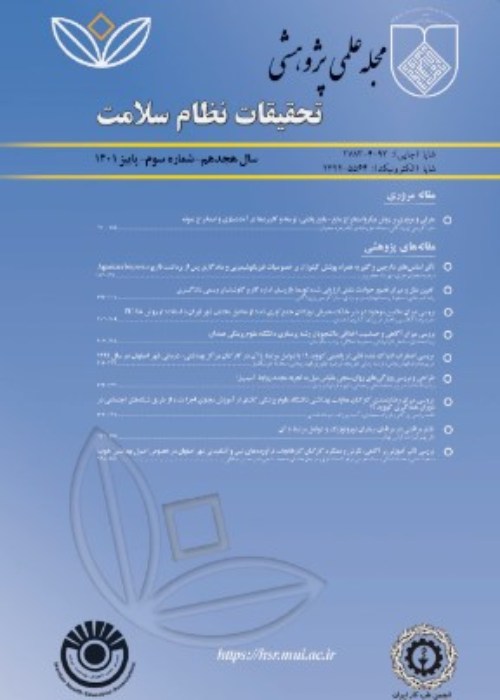Comparison of Photolysis Process and UV/O3 in Removing Benzene from Airflow
Volatile organic compounds (VOCs) are among the main air pollutants which have destructive effects on the environment and human health. Considering the carcinogenic effects of some of these compounds including benzene، how to control and limit them is considered an important issue in environmental research. The aim of this study was to evaluate the use of the combined ultraviolet (UV) /O3 method in the removal of benzene from the airflow.
The present experimental study was conducted using laboratory methods. The laboratory equipment consisted of air pumps، injection pumps، mixing chamber، rotameter، ozone generator، and a steel reactor with 45 cm length and a usable volume of 1. 35 liters in which a 15-watt UV-C diode with a wave length of 254 nm had been placed. Then، the different concentrations of benzene were continuously exposed to UV-C rays، different ozone doses، and simultaneous UV/O3 with varying reaction times (and considering the speed of the input airflow into the reactor). The concentration levels of benzene before and after the exposures were compared with each other and with the above-mentioned variables. The data were analyzed using descriptive and inferential statistics and by three-way ANOVA.
Concentrations of benzene vapored with different values of 10، 20، 30، 50، and 80 ppm passed through the reactor and was exposed to UV-C rays، different ozone doses، and simultaneous UV/O3 in sequence. The findings demonstrated that UV alone can remove benzene from the airflow up to 2%. Ozone can remove 14% of benzene from the airflow، while the concurrent application of UV/O3 can reduce the benzene in the airflow by 24%. The three way ANOVA test showed that there was a significant relationship between the variables of ozone dose، UV rays، and UV/O3 in the one hand، and benzene removal rate from the airflow، on the other hand (P < 0. 002).
Given the small effect of UV alone in separating benzene from the airflow، it can be concluded that advanced osidation process (AOP) reactions which produce active radicals can be used in the filtration of benzene. The findings indicated that the removal rate of benzene during the simultaneous use of UV/O3 is much more considerable than during the use of either of them alone. Additionally، the analysis of variance test demonstrated that the simultaneous use of UV/O3 has a positive cumulative effect.
- حق عضویت دریافتی صرف حمایت از نشریات عضو و نگهداری، تکمیل و توسعه مگیران میشود.
- پرداخت حق اشتراک و دانلود مقالات اجازه بازنشر آن در سایر رسانههای چاپی و دیجیتال را به کاربر نمیدهد.



